Tae-Yoon Kim
Analog Seizure Detection for Implanted Responsive Neurostimulation
Jun 11, 2021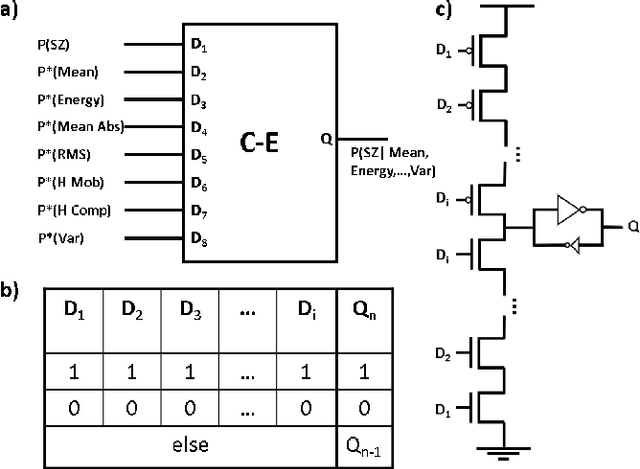
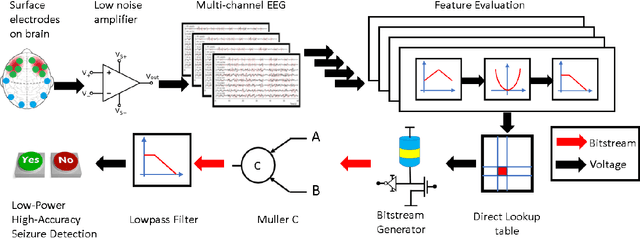
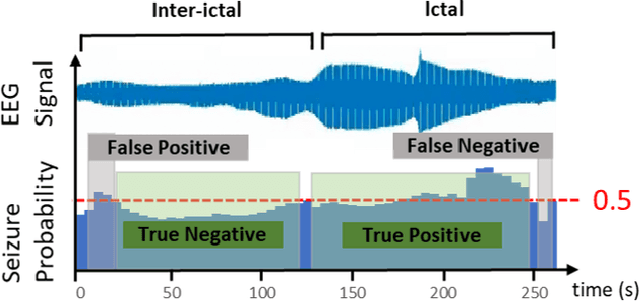
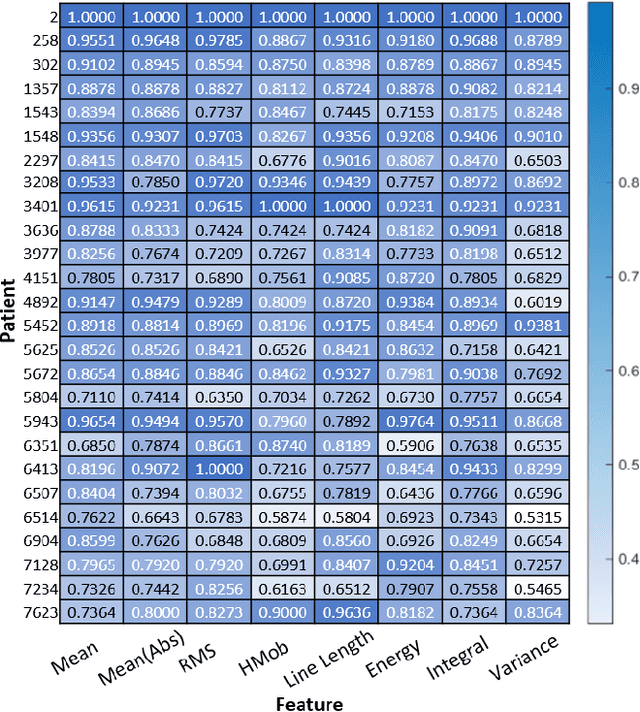
Abstract:Epilepsy can be treated with medication, however, $30\%$ of epileptic patients are still drug resistive. Devices like responsive neurostimluation systems are implanted in select patients who may not be amenable to surgical resection. However, state-of-the-art devices suffer from low accuracy and high sensitivity. We propose a novel patient-specific seizure detection system based on na\"ive Bayesian inference using M\"uller C-elements. The system improves upon the current leading neurostimulation device, NeuroPace's RNS by implementing analog signal processing for feature extraction, minimizing the power consumption compared to the digital counterpart. Preliminary simulations were performed in MATLAB, demonstrating that through integrating multiple channels and features, up to $98\%$ detection accuracy for individual patients can be achieved. Similarly, power calculations were performed, demonstrating that the system uses $6.5 \mu W$ per channel, which when compared to the state-of-the-art NeuroPace system would increase battery life by up to $50 \%$.
SUMBT+LaRL: End-to-end Neural Task-oriented Dialog System with Reinforcement Learning
Oct 06, 2020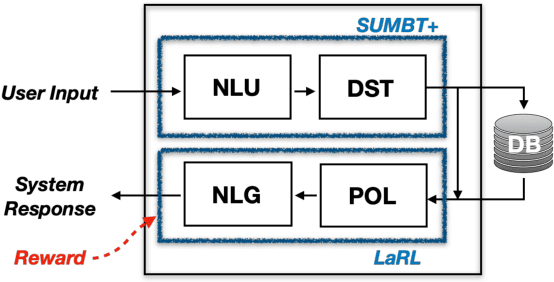
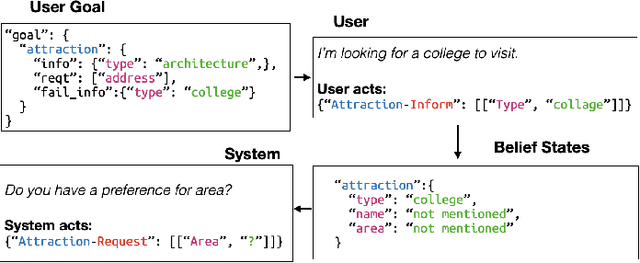

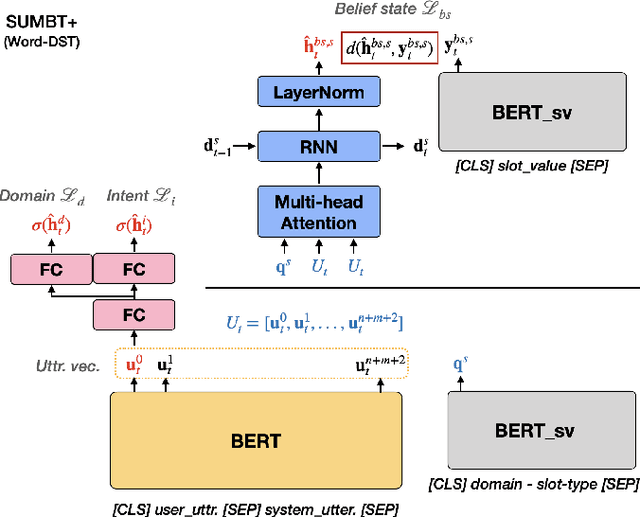
Abstract:The recent advent of neural approaches for developing each dialog component in task-oriented dialog systems has remarkably improved, yet optimizing the overall system performance remains a challenge. In this paper, we propose an end-to-end trainable neural dialog system with reinforcement learning, named SUMBT+LaRL. The SUMBT+ estimates user-acts as well as dialog belief states, and the LaRL models latent system action spaces and generates responses given the estimated contexts. We experimentally demonstrate that the training framework in which the SUMBT+ and LaRL are separately pretrained and then the entire system is fine-tuned significantly increases dialog success rates. We propose new success criteria for reinforcement learning to the end-to-end dialog system as well as provide experimental analysis on a different result aspect depending on the success criteria and evaluation methods. Consequently, our model achieved the new state-of-the-art success rate of 85.4% on corpus-based evaluation, and a comparable success rate of 81.40% on simulator-based evaluation provided by the DSTC8 challenge.
SUMBT: Slot-Utterance Matching for Universal and Scalable Belief Tracking
Jul 17, 2019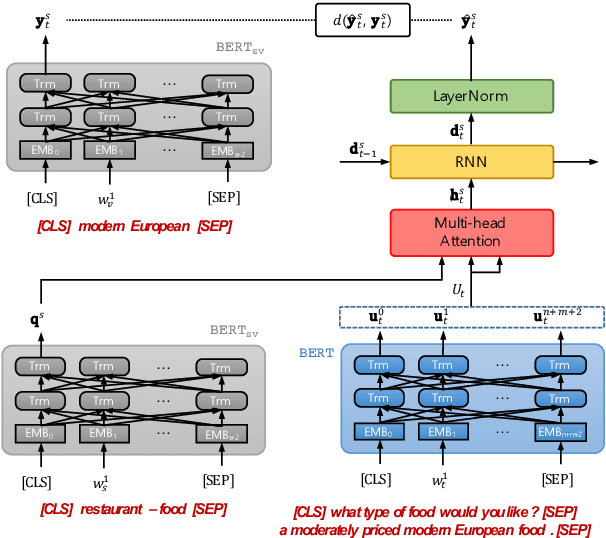
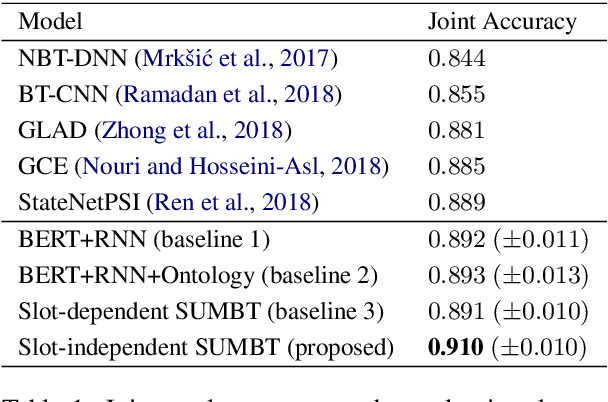
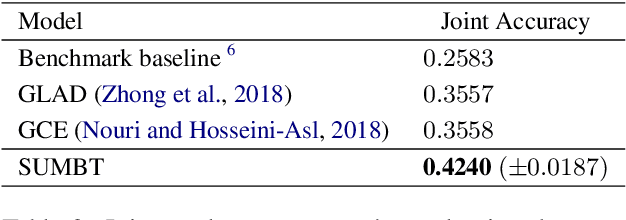
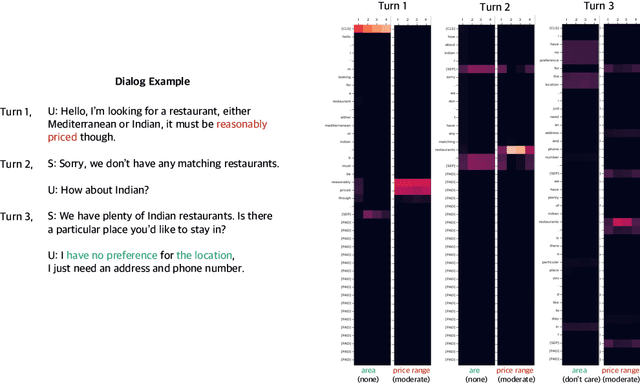
Abstract:In goal-oriented dialog systems, belief trackers estimate the probability distribution of slot-values at every dialog turn. Previous neural approaches have modeled domain- and slot-dependent belief trackers, and have difficulty in adding new slot-values, resulting in lack of flexibility of domain ontology configurations. In this paper, we propose a new approach to universal and scalable belief tracker, called slot-utterance matching belief tracker (SUMBT). The model learns the relations between domain-slot-types and slot-values appearing in utterances through attention mechanisms based on contextual semantic vectors. Furthermore, the model predicts slot-value labels in a non-parametric way. From our experiments on two dialog corpora, WOZ 2.0 and MultiWOZ, the proposed model showed performance improvement in comparison with slot-dependent methods and achieved the state-of-the-art joint accuracy.
 Add to Chrome
Add to Chrome Add to Firefox
Add to Firefox Add to Edge
Add to Edge